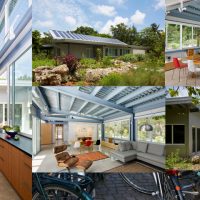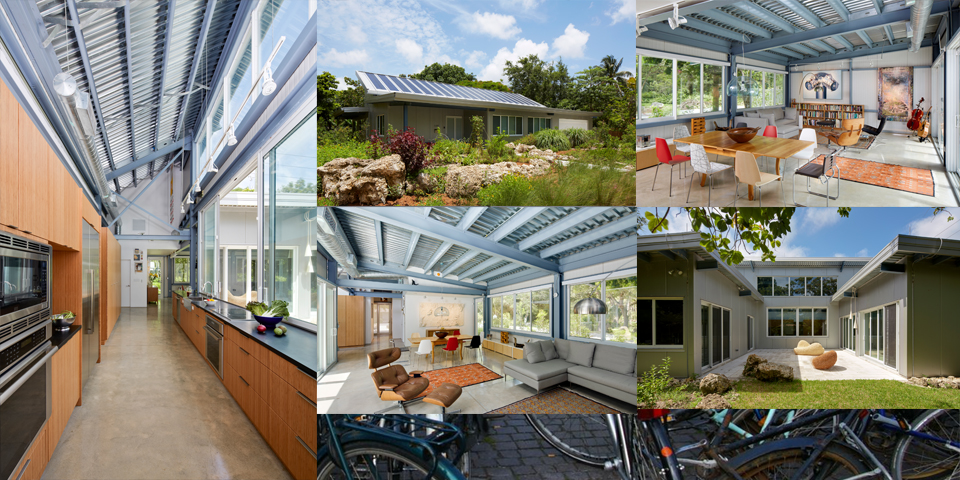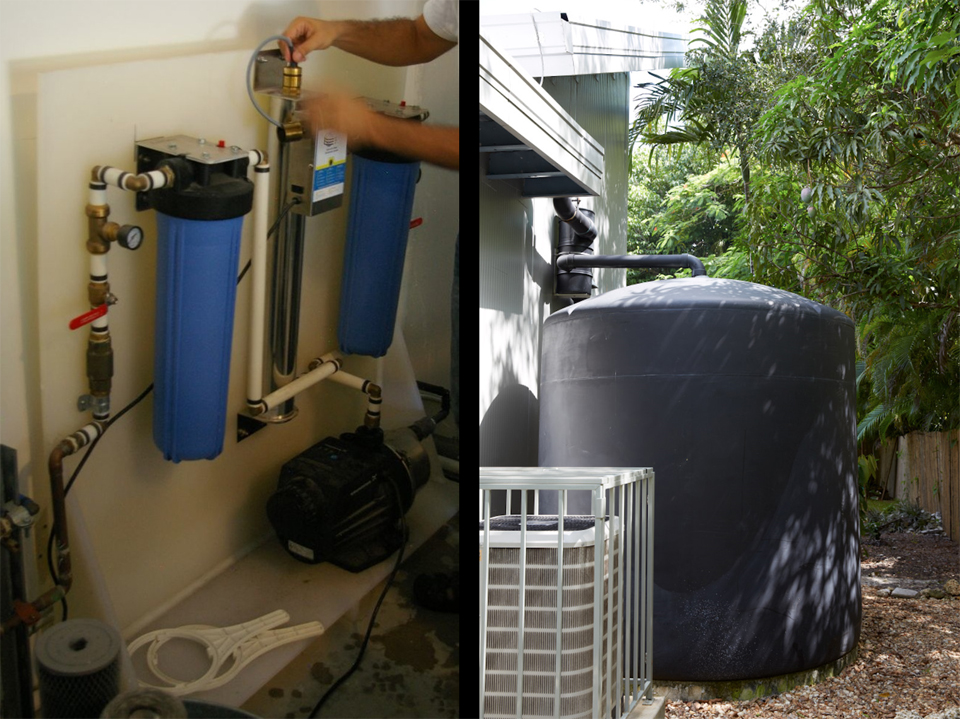Zero Net Energy

Let’s Make Miami a Net Zero Metropolis !
The built environment accounts for the lion’s share of climate changing carbon emissions, whether as energy consumed by buildings, or by cars moving through our cities’ streets, or as habitat lost to development. To be better stewards of the Earth, we need to ask how we can reduce the amount of resources used to construct and operate our built environment.
Zero Net Energy buildings, or Net Zero, produce at least as much power as they consume over the course of the year. Through a combination of energy efficiency and renewable energy generation, Net Zero buildings minimize their environmental impact by eliminating direct and indirect carbon emissions.
Net Zero is not the only useful benchmarking system for architecture. While the Passivhaus standard doesn’t require Net Zero, it does mandate an extremely high level of energy-efficiency, often linked to passive solar heating in temperate regions, and on-site energy generation. The Living Building Challenge requires Net Zero in both energy and water consumption. Buildings built according to the Living Building standard generate all their energy, harvest and filter all their water and treat all their waste on site.
My wife, Holly, and I built a highly energy — and resource — efficient house in South Miami in 2012. While the house is not Net Zero, the techniques we used offer a good example of how to build in a way that conserves energy toward the goal of powering our built environment completely with renewable energy. Our friends took to calling the house “Tin Box” after the blog we used to document its design and construction.
Conservation is key to achieving Zero Net Energy use. And since over half the energy used in buildings goes toward heating or cooling, it’s vital that the shell of the building – its envelope – can control temperature and humidity. The building envelope of our house – its walls and roofs – are made of highly insulated and tightly sealed prefabricated steel panels that significantly reduce the need for air conditioning.
Another important strategy is to conserve energy by orienting the building so that windows are shaded from direct sunlight or turned to the north in order to admit cool, indirect light. This allows us to fill the house with daylight (eliminating the need for electric lights during the day) while avoiding unnecessary solar heat gain.
We further reduced the energy load on the house by using a highly efficient air conditioning system and appliances, like an induction stove. Whenever possible we use LED lighting, which is at least five times as efficient as the obsolete incandescent lighting it replaces. And we use a solar hot water heater to eliminate another major energy requirement.
Having reduced the energy load through conservation, we are able to generate three-quarters of our power with a 5kW photovoltaic array on the uppermost roof. This roof faces due south and has the optimal slope, which is generally the same as a site’s latitude. Our panels are flexible, and are held in place with an adhesive that can withstand hurricane-force winds.
While Net Zero is only concerned with the energy the building uses during operation, we went further and sought to reduce the embodied energy, or energy used to produce, transport and erect the materials in the house. The steel in our house is mostly recycled, and by being prefabricated it produced very little construction waste on site. The envelope of the house represents only one seventh of the embodied energy of typical concrete block construction.
In fact, most of the house’s physical mass is made from recycled or rapidly renewable materials. Half the cement in the slab and foundation has been replaced with blast furnace slag, an industrial waste product. Our cabinets are made from fast-growing bamboo and responsibly harvested wood, while our kitchen countertop was made from recycled paper.
At a societal level, it requires enormous amounts of energy to pump and purify water, so our house conserves water in numerous ways. We collect rainwater, which we filter for use as drinking water. We also use a graywater system that recycles our bathwater for use as the flush water in our toilets. Together, these two systems eliminate two-thirds of our utility water use.
We also reduce water use by using native plants in our landscape, since these require no irrigation, while also providing habitat for native species. We do, however, use a little water to irrigate some of the crops in our garden. Besides the delight – and nutrition – our gardens bring us, they also reduce the amount of produce we need to purchase at the supermarket, which in turn reduces our water and energy footprints.
I want to emphasize that sustainability is not a style, nor a look. The Wells Fargo branch bank in Hialeah Gardens is designed to achieve Net Zero energy use and LEED Platinum certification in a building that uses proven building technologies, like insulated concrete formwork, while maintaining the company’s visual standards for branch design.
But it is also important to note that Net Zero buildings are just the beginning. Reducing 40% of our society’s energy consumption by buildings is good, but we also need to address the huge carbon footprint represented by transportation and other sectors. We need more than Net Zero buildings; we need Net Zero communities.
The key is to build denser communities than what we currently have in South Florida. This would allow us to walk, bike and use public transit as much as possible, which would significantly reduce energy use and carbon emissions. Denser communities are often richer communities, with greater social interaction between neighbors.
A great example is the Solarsiedlung development in Freiburg, Germany, which generates 40% more electricity than the town uses through a combination of planning, conservation and generation. The Passivhaus compliant buildings are well insulated and use passive solar heating in the winter. The town is compact enough to all but eliminate the need for cars, and the buildings are efficient enough to operate on less than the amount of energy generated by the rooftop solar arrays.
At the scale of a whole city, many large buildings can act as small power plants to offset the energy use of other buildings – like office towers – that can’t easily be made Net Zero. Over the course of a year, the football stadium in Philadelphia generates four times the power used during games, thus offsetting a considerable amount of energy used by other buildings. Imagine if the new canopies being installed at Sun Life Stadium in Miami were photovoltaic panels.
And it’s not just stadiums. In South Florida, the vast expanses of flat-roofed warehouses, shopping centers, hospitals, parking garages and other structures provide ideal settings for photovoltaic installations. Installing solar panels on the roofs of industrial and commercial buildings around the airport could replace the output from the two proposed nuclear reactors at Turkey Point, and at a fraction of the cost. Combined with rooftop installations on smaller buildings (like Tin Box) these arrays could make Miami the first Net Zero metropolis.
Of course, a truly Net Zero metropolis would need to move beyond carbon in other sectors besides buildings. Miami would need serious investments in transit and a commitment to building denser, more walkable neighborhoods in order to eliminate the 28% of carbon emissions that come from transportation. And we would need to re-examine everything from agriculture to waste management in order to completely eliminate our carbon footprint.
Consider, for example, that Atlanta and Barcelona have nearly identical populations, but because Barcelona occupies a fraction of the land area of Atlanta, its residents produce only one-tenth of the carbon dioxide emissions from transportation. Building a Net Zero metropolis is within our means.
While the specific construction techniques at our house are just one of many routes toward Net Zero construction, we want to reiterate the point that the integration of numerous concerns is essential to building sustainably. From building community to cultivating habitat to conserving resources, every act of building offers an opportunity to shape the future.








